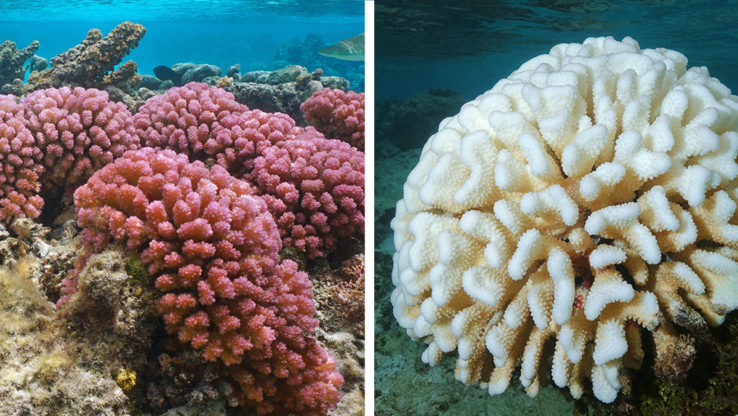Feb. 25, 2014
3 Bullets:
- ISB researchers discover a novel mechanism used by cells to rapidly turn “on” or “off” genes in order to change survival strategies in response to environmental events.
- The “switch” was discovered in Halobacterium salinarium and found to be conserved in diverse life forms.
- Research shows that microbes may use specialized switches depending on the type of environmental challenge they encounter.
By Jake Valenzuela
In a study published online on Feb. 25 in the journal Molecular Microbiology, researchers at the Institute for Systems Biology report the discovery of a novel mechanism by which organisms adapt efficiently to a rapidly changing environment.
All organisms are often challenged by unpredictable events such as a human skin cell experiencing sudden exposure to UV rays, or a microbe in a lake encountering changes in water chemistry and temperature during a rainstorm. In each of these circumstances, the ability to elicit an immediate response – turning “on” or “off” genes – is often a matter of life or death.
When a gene needs to be turned on, its information has to be transcribed from DNA into a molecular copy called RNA, which is used to manufacture a protein that carries out a very specific function in the cell. Conversely, in addition to blocking these steps, turning a gene off requires destruction of the RNA and protein made from that gene. Every step in converting genetic information from DNA to RNA to protein and their degradation is tightly regulated. Some regulatory actions occur quickly, while others are much slower.
Researchers at ISB have discovered a novel mechanism that acts as a “switch” to rapidly turn off genes. At the crux of this switch is an enzyme called an RNase that is made together with other functions that are necessary to adapt to a new environment. Interestingly, this RNase specifically degrades RNA molecules from genes, whose functions are unnecessary, and in fact detrimental in the new environment. Without such a mechanism, an organism would waste energy by performing unnecessary tasks and become ill-equipped to compete in a crowded dog-eat-dog environment.
The authors used a systems approach to discover the new mechanism in Halobacterium salinarum, a microbe in the Great Salt Lake that requires this fast-acting strategy for adaptation to sudden changes in salinity. Insights into how this organism has adapted to live in extremely salty solutions might hold the key to agriculture and biotechnology in non-arable saline environments.
Journal: Molecular Microbiology, Feb. 24, 2014
Title: An evolutionarily conserved RNase-based mechanism for repression of transcriptional positive autoregulation (link to paper)
Authors: Elisabeth J. Wurtmann, Alexander V. Ratushny, Min Pan, Karlyn D. Beer, John D. Aitchison, Nitin S. Baliga



 isbscience.org/research/unpredictable-environments-require-predictably-fast-responses/
isbscience.org/research/unpredictable-environments-require-predictably-fast-responses/






